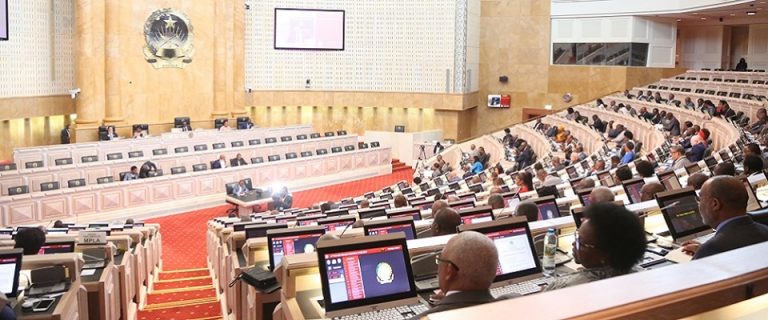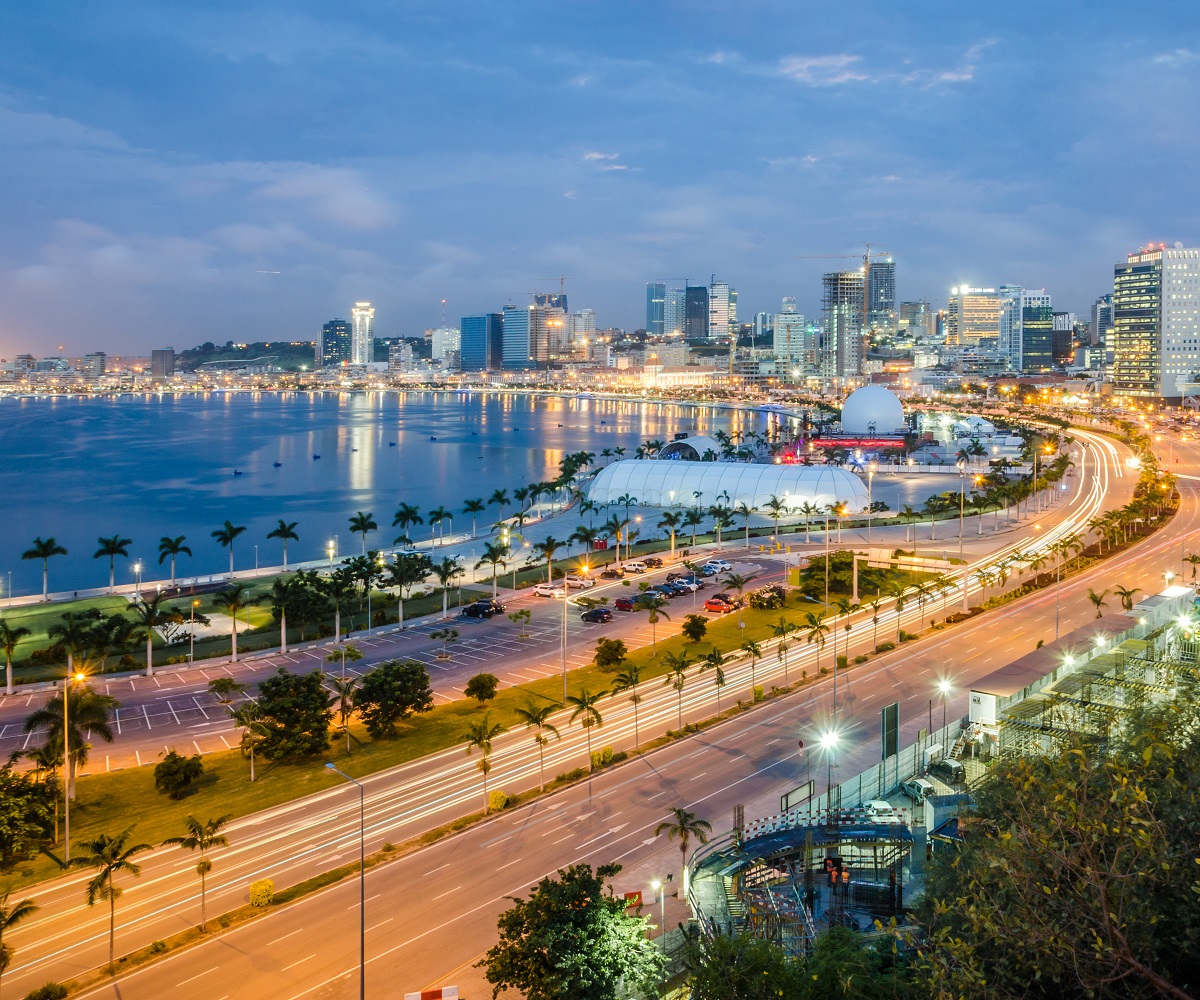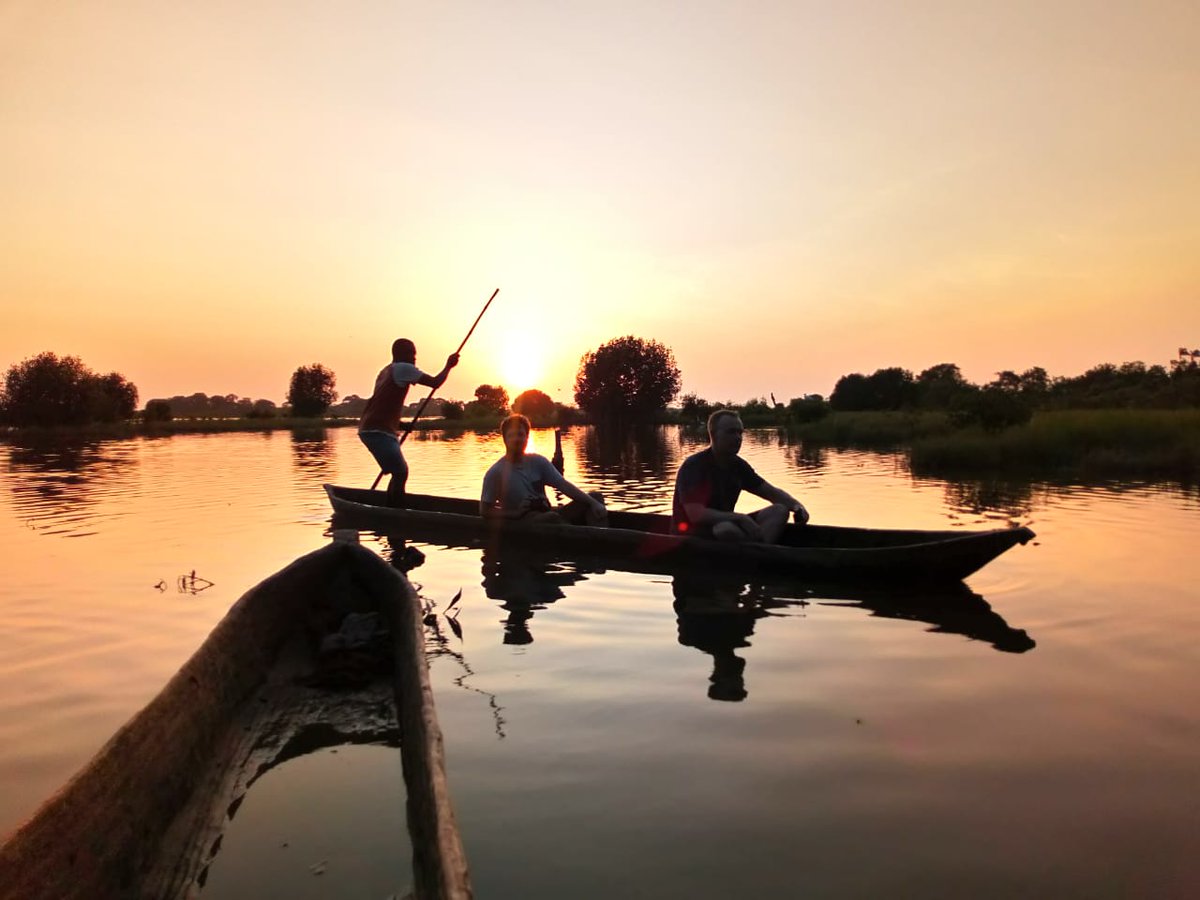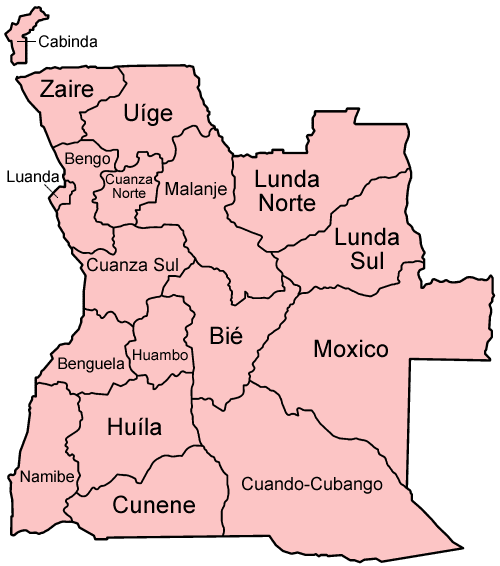
Luanda is a large port city on the northern coast that blends Portuguese-style colonial landmarks with traditional African housing styles and modern industrial complexes.

Capital City
Luanda is a large port city on the northern coast that blends Portuguese-style colonial landmarks with traditional African housing styles and modern industrial complexes.

Languages
Official Language: Portuguese National Languages: Kikongo, Kimbundo, Tchokwe, Umbundo, Mbunda, Kwanyama, Nhaneca, Fiote, Nganguela, etc.

President
João Manuel Gonçalves Lourenço, was born on March 5th, 1954, in the city of Lobito, Benguela Province. He has been serving as President of Angola since 26 September 2017.

Government
Presidential republic, whereby the President is both head of state and head of government. Executive power is vested in the President, Vice-president and the Ministers Council.

Luanda is a large port city on the northern coast that blends Portuguese-style colonial landmarks with traditional African housing styles and modern industrial complexes.


João Manuel Gonçalves Lourenço, was born on March 5th, 1954, in the city of Lobito, Benguela Province. He has been serving as President of Angola since 26 September 2017.

Presidential republic, whereby the President is both head of state and head of government. Executive power is vested in the President, Vice-president and the Ministers Council.
Main Religion
Official Currency
Independence Day
The territory of the Republic of Angola is located south of the Equator on the western coast of Africa. It is bordered by the Republic of the Congo on the north, the Democratic Republic of Congo and Zambia to the east, Namibia to the south and the Atlantic Ocean to the west. It also includes the enclave of Cabinda to the north which is in between the Congo and the Democratic Republic of the Congo.
The capital and commercial center is Luanda, a large port city on the northern coast that blends Portuguese-style colonial landmarks with traditional African housing styles and modern industrial complexes.



Angola has a total surface area of 1,246,700 km2, and an Atlantic maritime shoreline measuring 1,650 km. Its coastline is quite regular, having a few bays and capes.
| Province | Area (km2) | Capital City |
| Bengo | 33.016 | Caxito |
| Benguela | 39.826 | Benguela |
| Bié | 70.314 | Kuito |
| Cabinda | 7.270 | Cabinda |
| Kuando-Kubango | 199.049 | Menongue |
| Kwanza-Norte | 24.110 | N’dalatando |
| Kwanza-Sul | 55.600 | Sumbe |
| Cunene | 87.342 | Ondjiva |
| Huambo | 34.270 | Huambo |
| Huíla | 79.022 | Lubango |
| Luanda | 2.417 | Luanda |
| Lunda-Norte | 103.000 | Dundo |
| Lunda-Sul | 77.367 | Saurimo |
| Malanje | 97.602 | Malanje |
| Moxico | 223.023 | Luena |
| Namibe | 57.091 | Namibe |
| Uíge | 58.698 | Uíge |
| Zaire | 40.130 | M’BanzaCongo |

The climate is tropical in the north and subtropical in the south, with temperate climates in the higher altitudes. There are two distinct seasons: hot and humid (September to May), in which the rainfall levels are quite high and cold and dry (May to September), called Cacimbo.
Angola’s average temperatures are 27 ° C maximum and 17 ° C minimum.

The hydrographical characteristics of Angola are directly related to altitude since the rivers flow downstream from the plateau zone and mountain ridge to the lower areas.
The biggest and most navigable river is the Kwanza, measuring 1,000 km. The primary hydrographical basins are the rivers Kwanza (the largest), Zaire, Mbridge, Queve, Cunene and Cuando.
Dilolo is the primary lake and Panguila and Muxima the primary lagoons.
MONDAY–THURDAY: 9:00 am – 4:00 pm
FRIDAY: 9:00 am – 12:30 pm